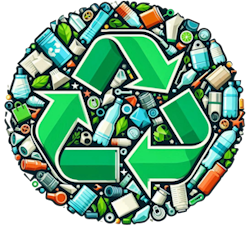Landfills have always been the ideal waste disposal solution on a global scale. While the amount of waste we produce rises, landfills start to fill up since conventional methods lead to harmful linkage with environment and it becomes apparent that there is a necessity for modern approaches in landfill management. This article looks at some of the concepts for what landfills could be in future and new ways that we are thinking about getting rid of waste.
Landfills and waste management
The concept of zero waste to landfill is one of the most revolutionary thoughts changing how we should view waste disposal. The approach stresses waste minimization as well removal, and recycling with the objective of zero waste commission to landfills. Examples include San Francisco as the first city in the United States to set a zero waste goal by 2030, and taking action on PCR mandatory composting/recycling, plastic bags bans (referendum), producer responsibility ordinances.
While alternatives such as waste-to-energy (WtE) technologies do provide a more sustainable option to deal with unavoidable wastes. WtE methods can reduce electricity demand and heat emissions—combusters, gasifiers, Pyrolysis units or anaerobic digestion plants for example — to convert non-recyclable waste into useful energy. For instance, this decreases the amount of waste being dumped into landfills and gives us a renewable energy supply.
Yet another development in waste management, bioreactor landfills are facilities that treat municipal solid wastes by accelerating and enhancing natural anaerobic processes. Bioreactor landfills are different from traditional methods by stimulating the natural process of biodegradation using a controlled addition — either gas or liquid (leachate). This speeds up the degradation of the organic waste, thereby making a landfill live longer and enhancing landfill gas recovery for potential beneficial uses.
Novel approaches in junk disposal
Further, another approach related to waste disposal is landfill mining, e.g, excavating and restoring waste from landfills accumulated in the past to reuse materials, energy and a place. This offers a solution to land scarcity by utilizing the waste that would otherwise be incinerated or exported as new fill material, and can contribute to reducing the GHG impact of old non-managed landfill sites.
In addition to this technological innovation, improvements in landfill design and operation are also making waste management more sustainable. Today’s landfills are built with state-of-the-art liner and leachate collection systems to prevent groundwater contamination, as well as gas collection systems for capturing the methane produced from trash decomposition. The first generates an environmental benefit as it helps to mitigate the footprint of landfills and turn them into a resource.
Also, the idea of ”sustainable landfills” or “eco-parks”. Here, instead of stand-alone landfills that work more on an underground status quo where the waste just piled up with centuries and percolating into water table; in these landfill settings there are recycling, composting facilities built-in, together come renewable energy systems along public amenities like parks and education centers now less isolated places. Multi-functional sites such as these help maximize land use and resource recovery while minimizing the public’s perception of landfilling in their communities.
Apart from fluid technological advancements, required policy measures and public attention are necessary to gear up the future of landfills. Innovation in waste disposal can be further stimulated by policies that encourage the use of renewable energy, as well as those which reward a reduction in waste and promote recycling. Promote public education and participation about waste Segregation, recycling and responsible waste disposal.
In evaluating the possibilities that lie on the horizon, it seems clear that landfills will continue to play a critical disposal function—albeit in different forms. The objective in the future is minimizing disposal, maximising resource recovery and minimising environmental effects on waste. This transformation landscape sees them not as mere dumping grounds but rather dynamic resource-processing locations.
To sum it up, landfills of the future must be a lot more than dumps. Waste disposal in the first section was generated exclusively by zero waste aims, onto garbage-to-energy technologies being bioreactor landfills out of landfill mining and contemporary sanitary design afterward on to think about eco-parks — all supporting a more sustainable approach. These strategies, working together as policies and engaging the public will transform the way that landfills can play in civilization with a circular economy.
Sources
- https://www.deq.virginia.gov/our-programs/pollution-prevention/virginia-environmental-excellence-program/sustainability-partners-and-members
- https://pw.virginiabeach.gov/trash-recycling/curbside-services
- https://virginiabeachdumpsterrentals.com/
- https://sustainability.virginia.edu/materials-waste
- https://geohub-vadeq.hub.arcgis.com/
